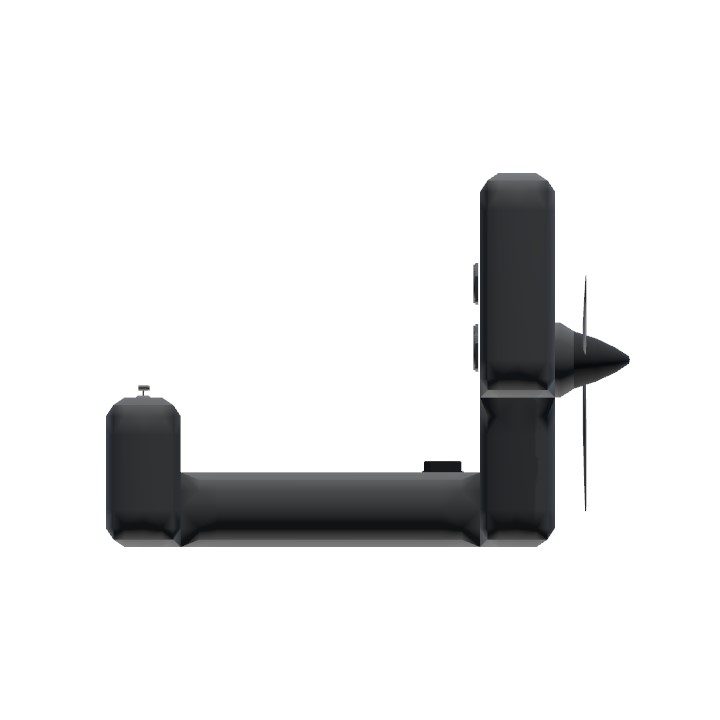A revision of Ku’s https://www.simpleplanes.com/u/Ku proof of concept for propeller pitch optimization. This makes more direct use of built in rate/sum functions compared to the original and additionally provides inside propeller a regularization term which prevents over-revving. This is a pretty general archictecture for this system and the input into the propeller pitch can be modified according to the provided structure. This structure is essentially rawcommand-k*pow(RPM/maxRPM,p) where p and k can be tuned for optimal behavior. Overall, this system is a 1st order refurbishment of the built-in second order auto-pitching of propellers. As such, it has negligible overshoot and very fast rise/settling time compared to the stock method.
Specifications
Spotlights
- ThomasRoderick 1.2 years ago
General Characteristics
- Predecessor Automatic Propeller Pitch Governing Algorithm (APPGA)
- Created On iOS
- Wingspan 15.8ft (4.8m)
- Length 11.1ft (3.4m)
- Height 8.2ft (2.5m)
- Empty Weight 23,810lbs (10,800kg)
- Loaded Weight 23,988lbs (10,880kg)
Performance
- Horse Power/Weight Ratio 0.041
- Wing Loading N/A
- Wing Area 0.0ft2 (0.0m2)
- Drag Points 6852
Parts
- Number of Parts 46
- Control Surfaces 0
- Performance Cost 151





interesting, I will look into this. Once, I did a plane with manual pitch control so I could reverse the thrust to slow down the plane when landing -